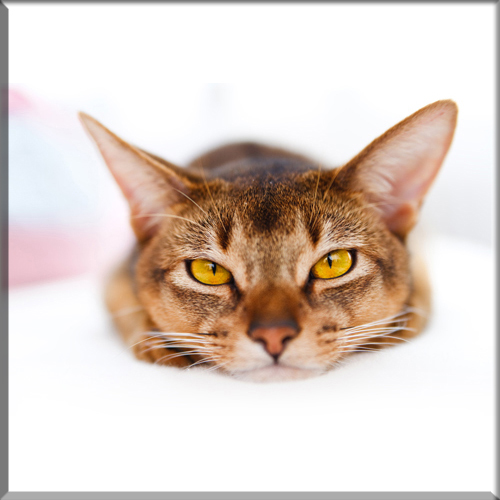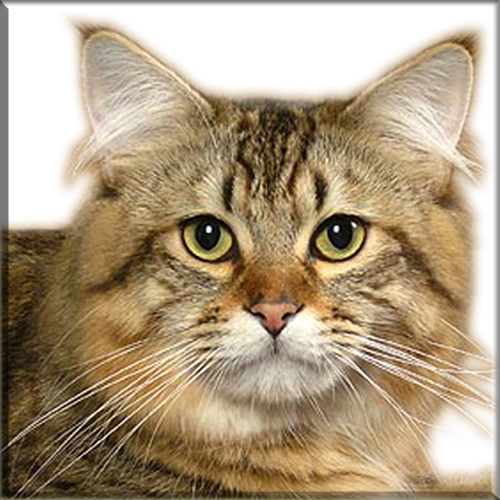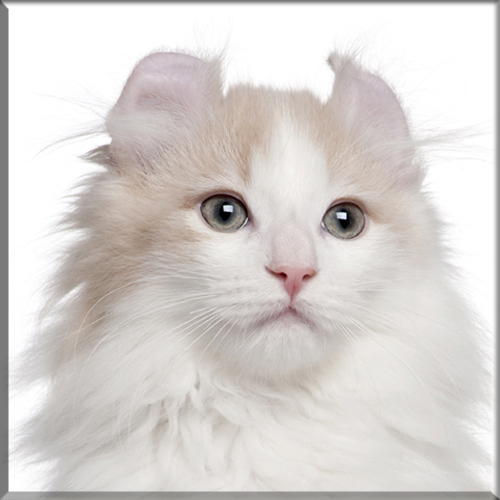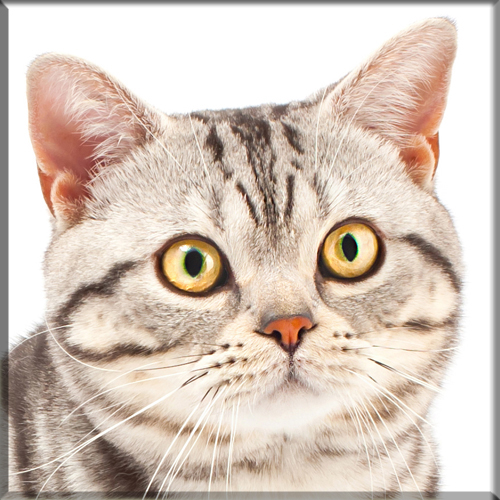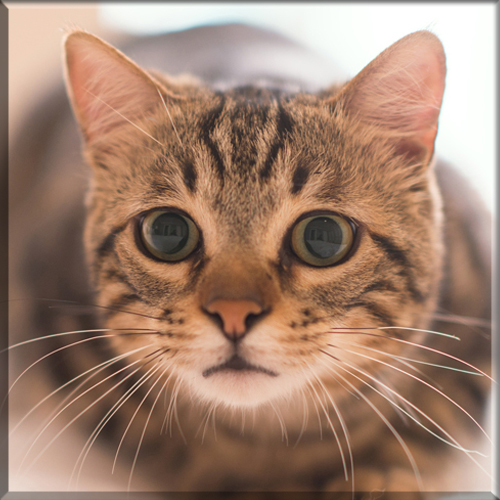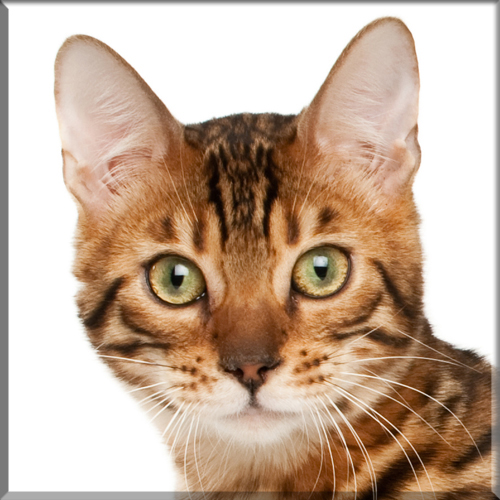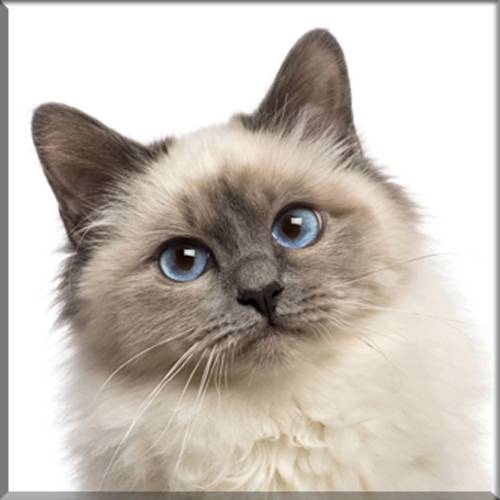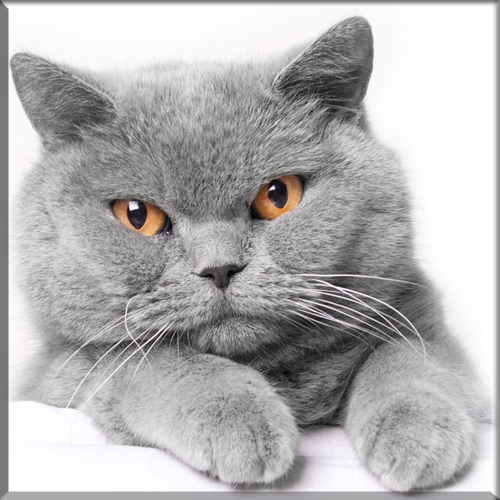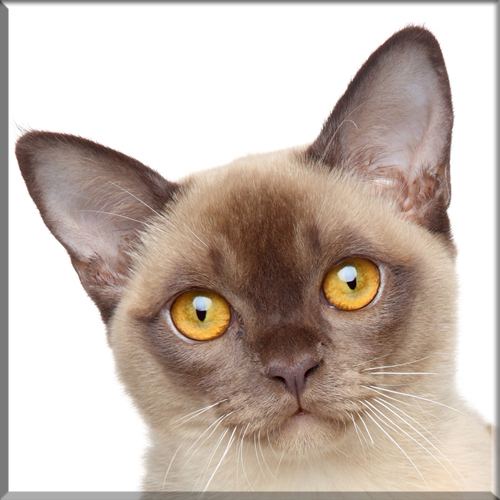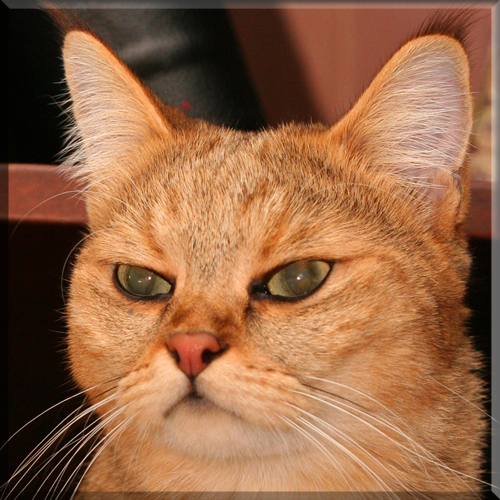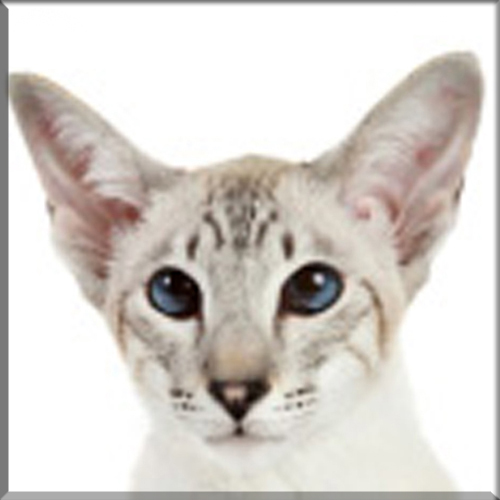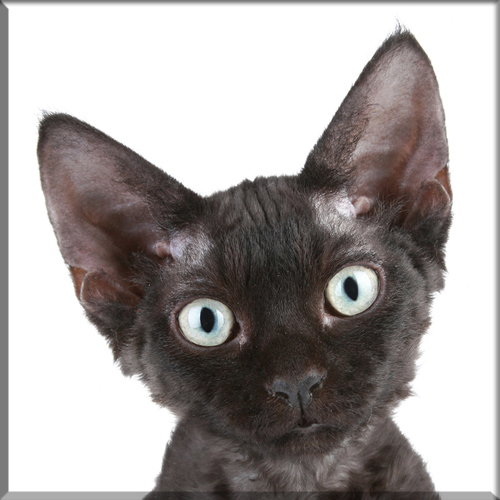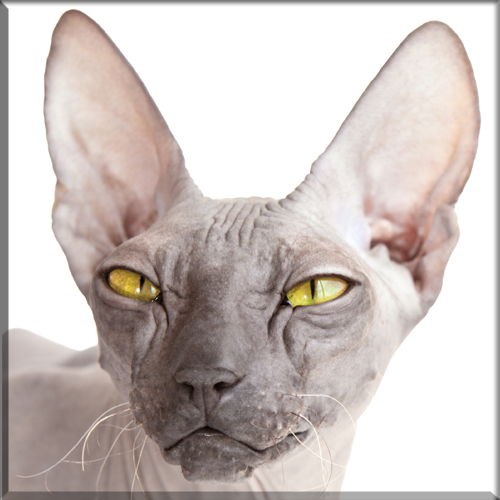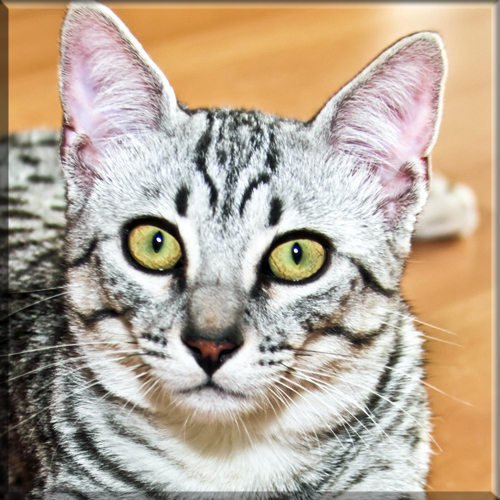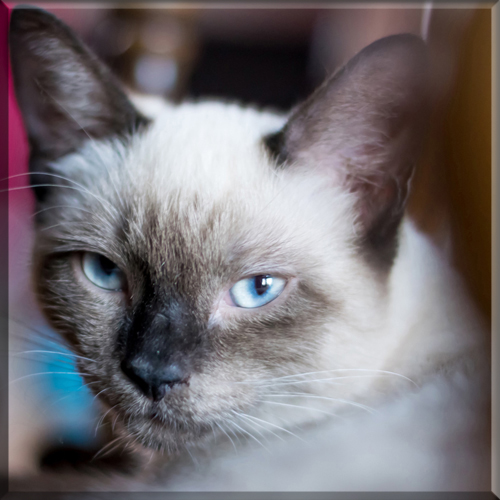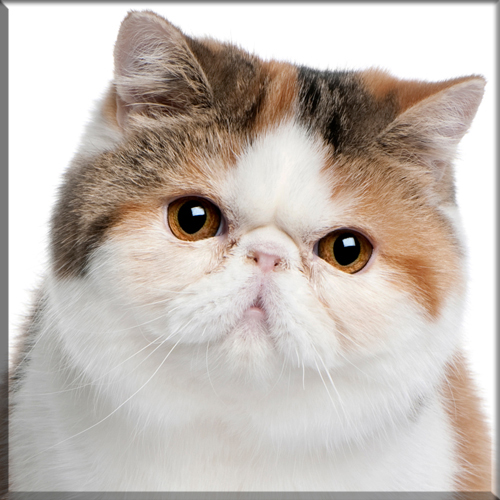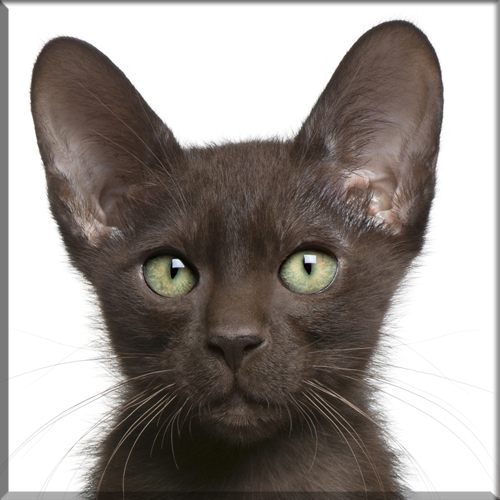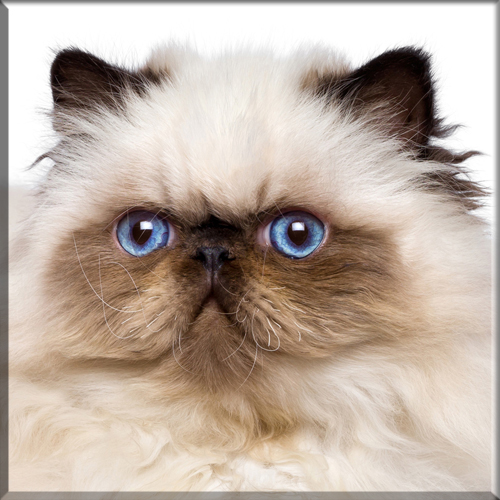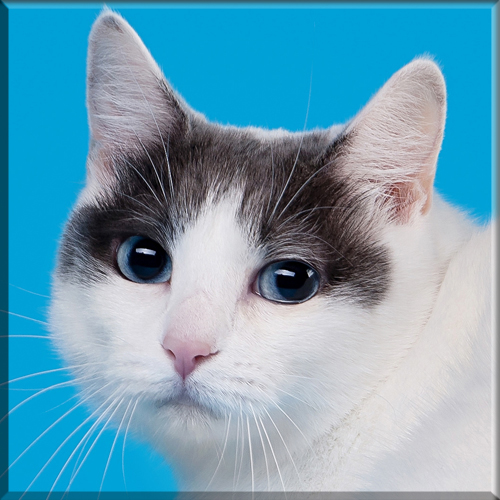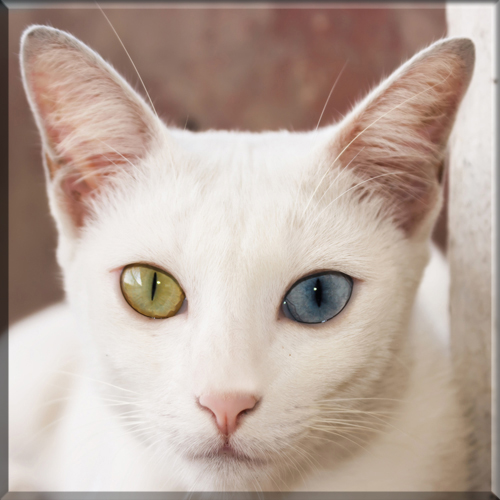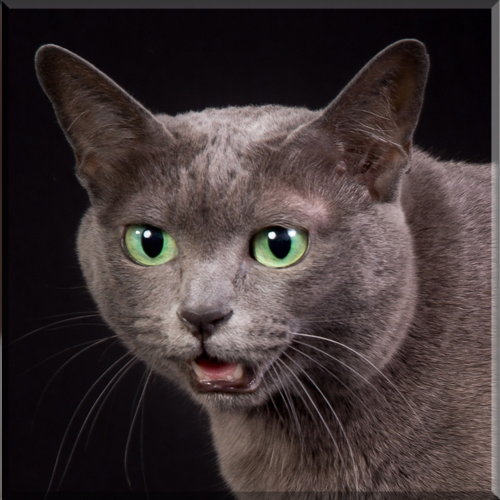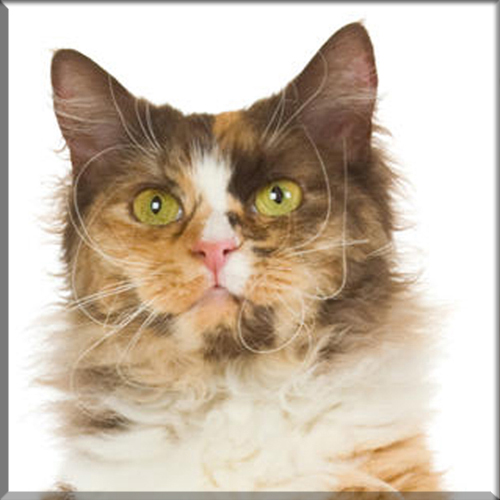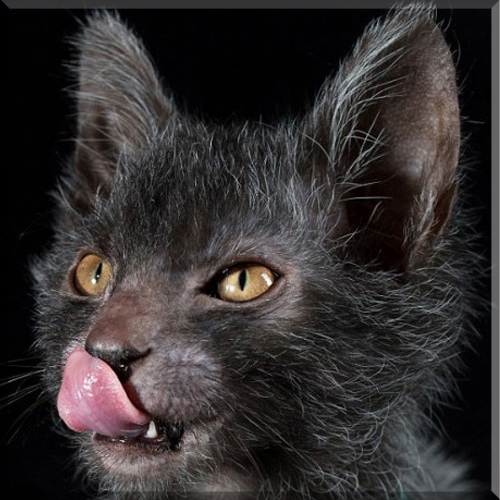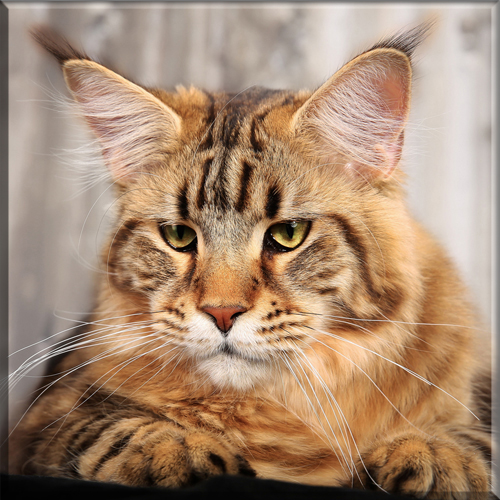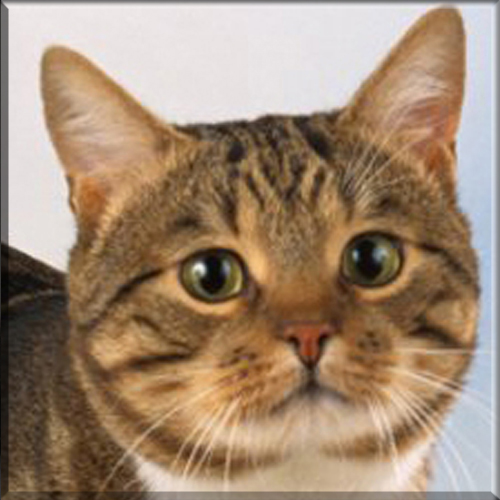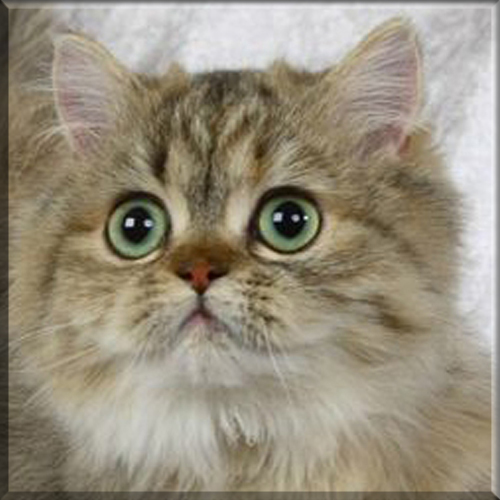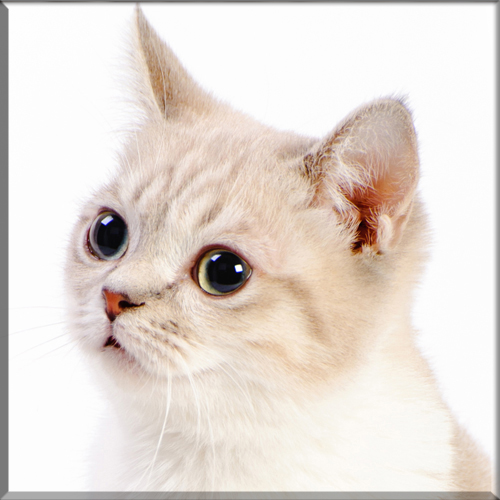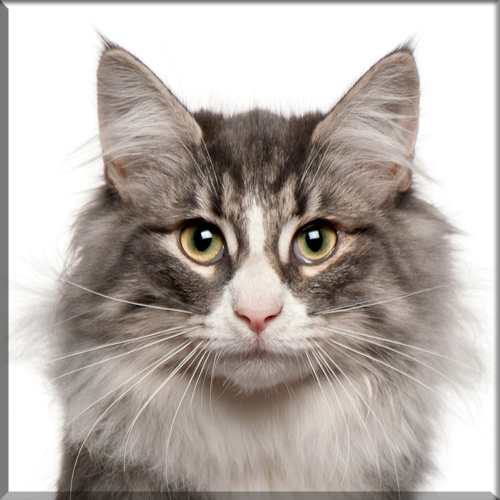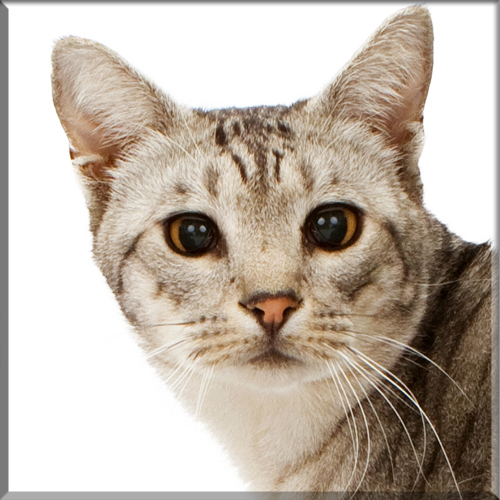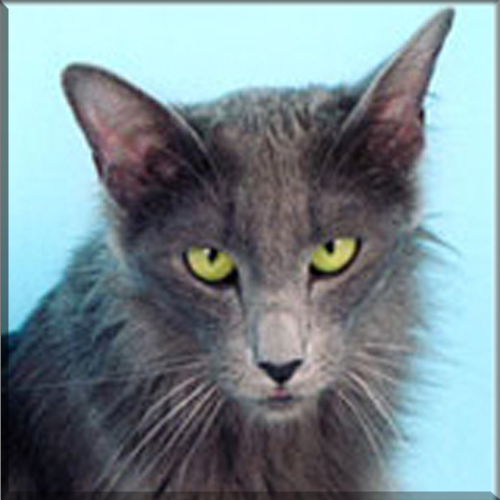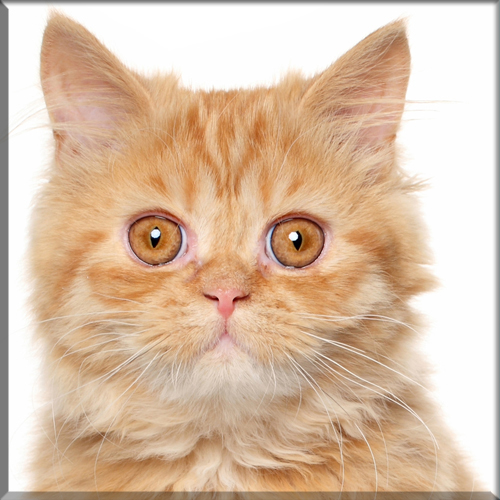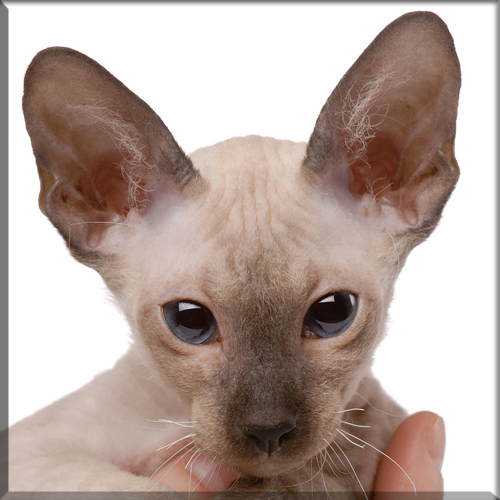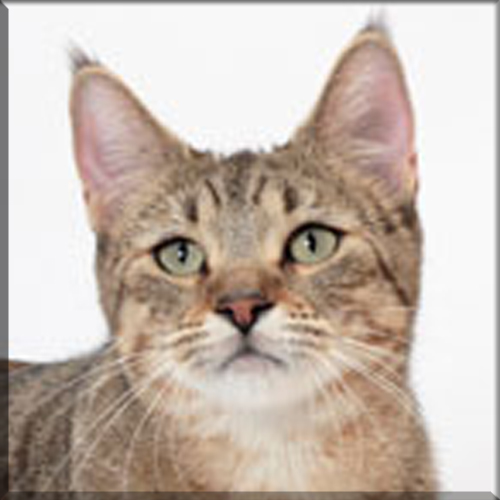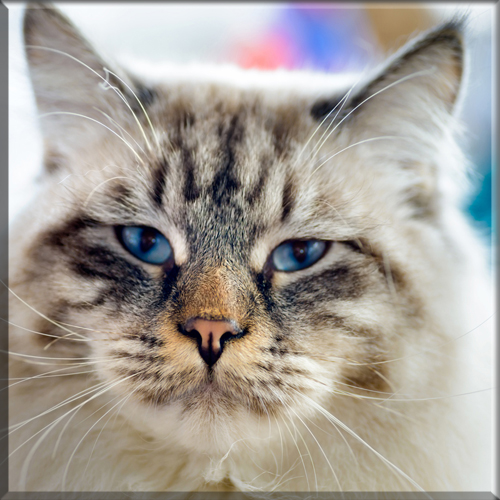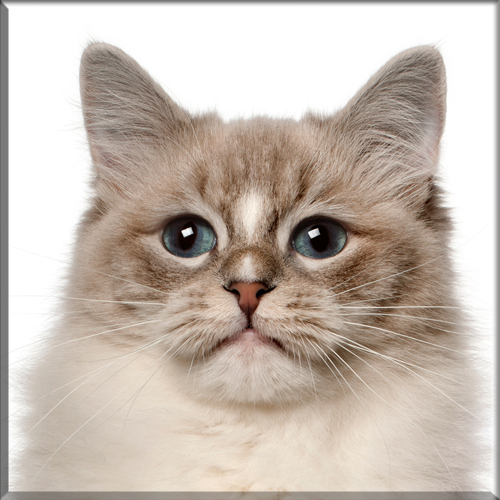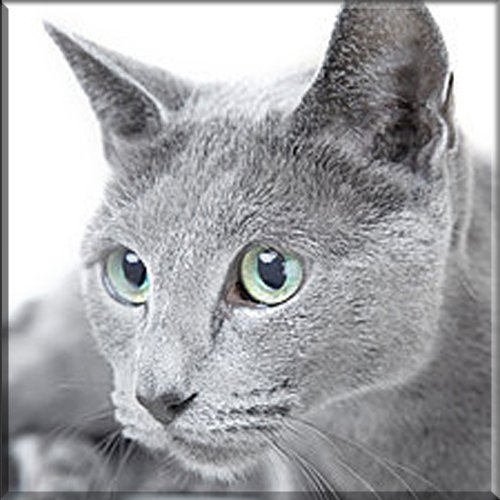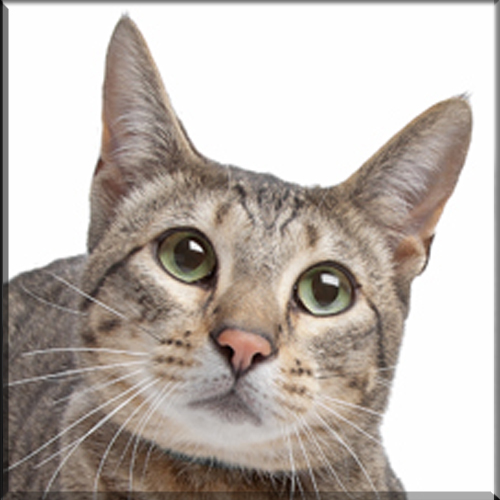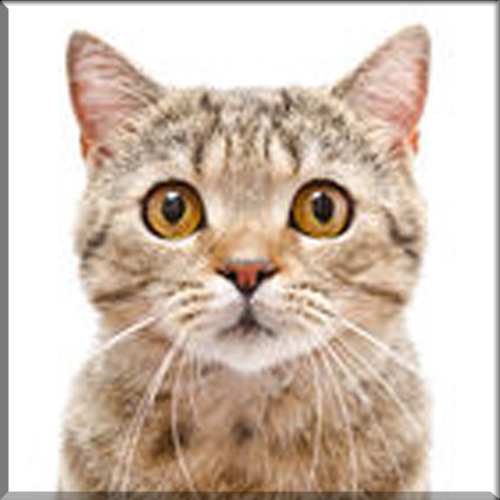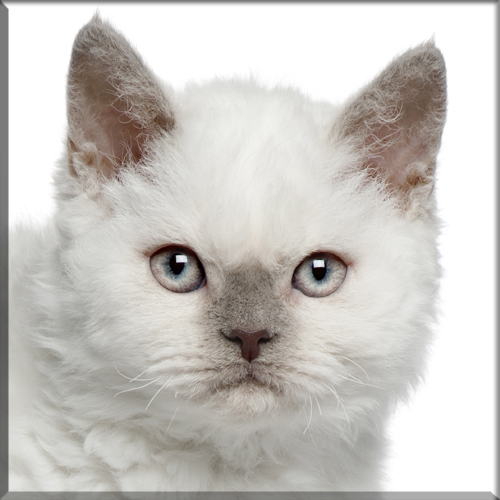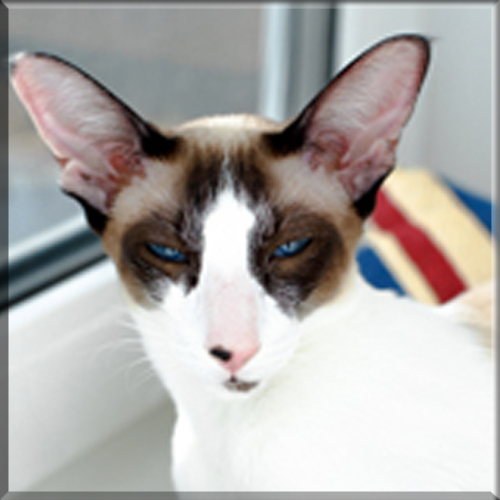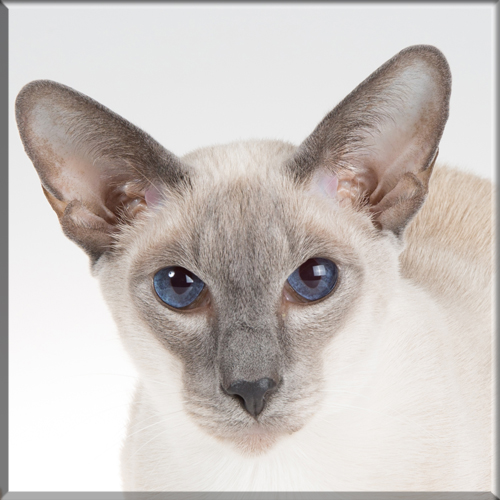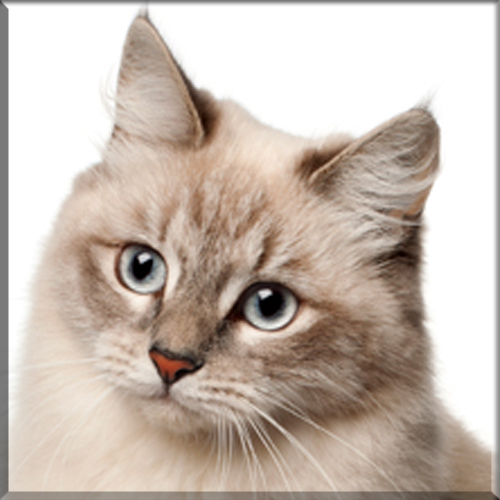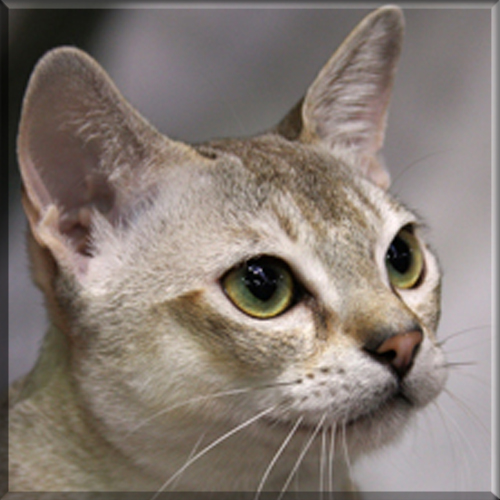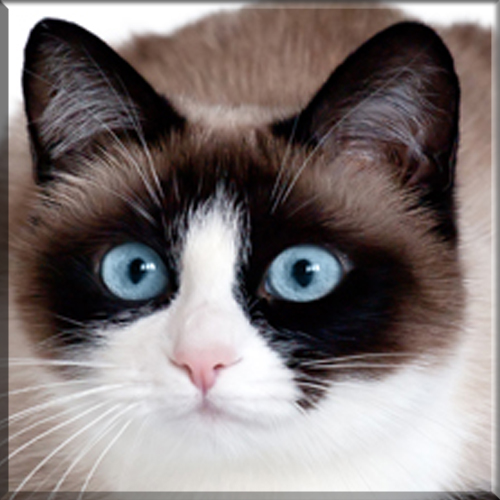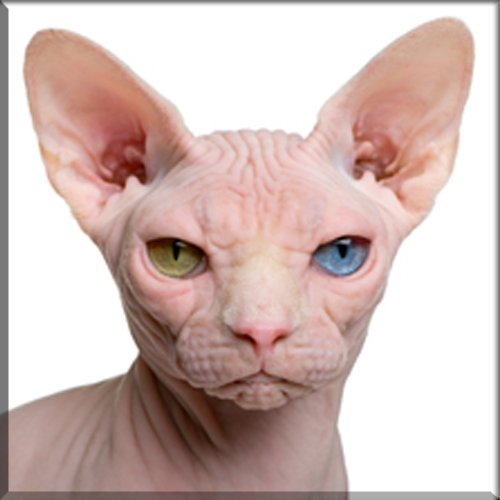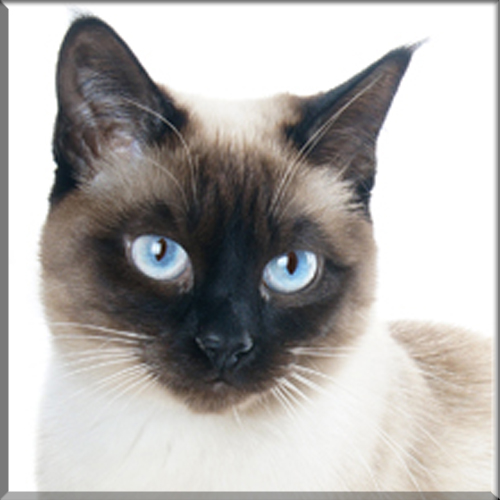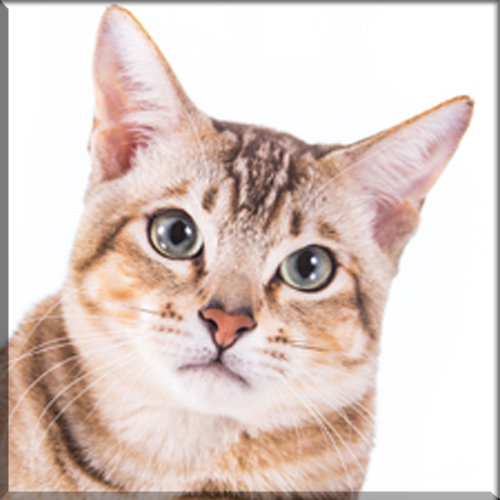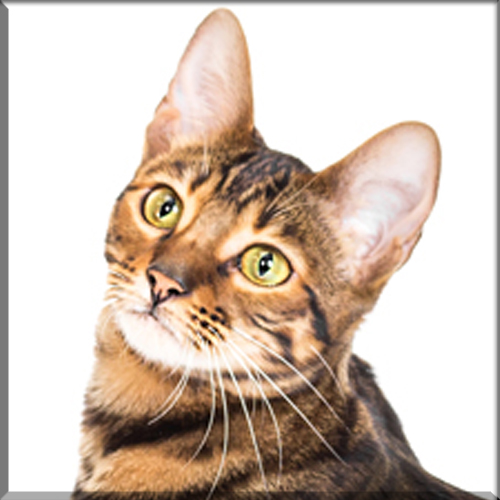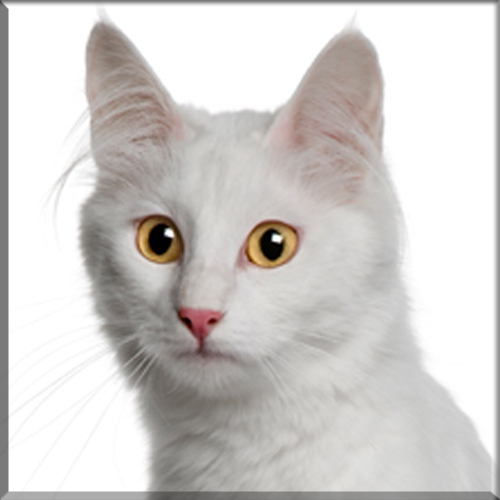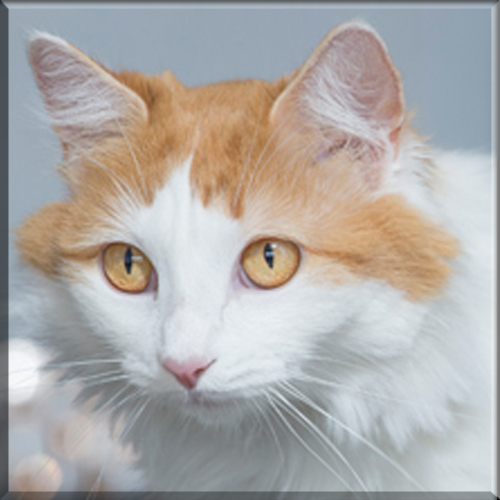Cornish Rex

Appearance and features:
The coat of a Cornish Rex is extremely fine and sometimes curly. Their light coat means that they are best suited for indoor living in warm and dry conditions, as they are sensitive to low temperatures. They like to stay near warm places such as computer monitors, light bulbs, laps and shoulders.
The breed is sometimes referred to as the Greyhound of the cats, because of the sleek appearance and the galloping run characteristic of the breed.[1] These cats tend to stay playful and kittenish throughout their long lives. Some Cornish Rexes like to play fetch, race other pets, or do acrobatic jumps. The Cornish Rex is an adventurous cat and is very intelligent. It can readily adapt to new situations and will explore wherever it can go. The Rex is extremely curious, seeks out the company of people and is friendly towards other companion animals.
Size:
This is a small-size cat weighing 8 pounds or less.
Family:
Cornish Rex cats originated in Cornwall, England, where one first appeared in a litter of barn cats in 1950. A cream-colored male, named Kallibunker, was covered in tight rows of tiny curls, giving him the appearance of a miniature lamb. When that first kitten, was bred with Siamese, Burmese, and British Shorthair cats, the kittens had normal coats, but they carried the recessive gene.
It was discovered in 1960 that the Rex type was caused by a recessive gene, which means that both parents must carry the gene. In 2013, researchers identified the mutation that defines the Cornish Rex breed. Genome-wide analyses were performed in the Cornish Rex breed and in 11 phenotypically diverse breeds and two random bred populations. A gene on chromosome A1, the lysophosphatidic acid receptor 6 (LPAR6), was identified to have a 4 base pair deletion. This induces a premature stop codon in the receptor which is absent in all straight haired cats analyzed. LPAR6 encodes a receptor essential for maintaining the structural integrity of the hair shaft. In humans, LPAR6 mutations result in a form of ectodermal dysplasia characterised by a woolly hair phenotype.
Coloring:
Cornish Rex cats come in a wide variety of coat colours and patterns, outlined in the breed standard: solids, including white, black, chocolate, orange and the dilutes blue, lilac and cream; all forms of tabby including classic, mackerel and ticked tabbies, bicolor “tuxedo” coat in many colours, tortoiseshell, “smoke” colours and the colour-point pattern standard in the Siamese breed.
Origin:
The Cornish Rex is a genetic mutation that originated from a litter of kittens born in the 1950s on a farm in Cornwall, UK.[4] One of the kittens, a cream-colored male named Kallibunker, had an extremely unusual, fine and curly coat; he was the first Cornish Rex. The owner then backcrossed Kallibunker to his mother to produce 2 other curly-coated kittens. The male, Poldhu, sired a female called Lamorna Cove who was later brought to America and crossed with a Siamese, giving the breed their long whippy tails and big ears.
The Devon Rex looks similar in appearance to the Cornish Rex but has guard hairs and sheds. The Devon Rex mutation is different from the Cornish Rex mutation in that the Devon has shortened guard hairs, while the Cornish Rex lacks guard hairs altogether. Crosses between Devon and Cornish Rexes are not permitted in pedigrees and matings between them will not produce a cat with short wavy fur. Another hair-deficient breed is the Sphynx cat, which has no hair but may have a very light coat of fuzz.
Using the word “Rex” to imply curly or otherwise unusual fur originates from an occasion when King Albert I of Belgium (1875–1934) entered some curly-haired rabbits in a rabbit show. They did not meet the breed standard, but the show’s officials did not wish to risk offending the king by rejecting them. Instead, they accepted them but wrote “Rex” (Latin for “king”) beside their names.
Temperament:
The Cornish Rex are highly social, intelligent cats. Wanting to be the center of attention, they are very acrobatic & clownish, and retain their kitten-like personalities throughout their adult life. A quick learner, they are easy to train, with favorite games such as Fetch, retrieving toys like a dog, and if no one is available…they will even throw the toy for themselves with their little paws that they use like hands. Cornish Rex make wonderful pets, especially for families who don’t mind having to entertain them regularly. They do not like to be alone for long periods so it is a good idea for them to have a companion if the family works long hours.
Health concerns:
The Cornish Rex has a thin coat that offers little protection from the sun, and can sunburn easily. They are also be prone to hypertrophic cardiomyopathy (HCM) the most common form of heart disease in cats. It causes thickening (hypertrophy) of the heart muscle and patellar luxation, a condition in which one or both kneecaps may slide out of place, and cause difficulty walking.
Breed Characteristics
Here is a helpful guide for the different characteristics of the breed. On a Scale of 1-5. 1 being very low level to 5 being high level.
Hypoallergenic : Yes
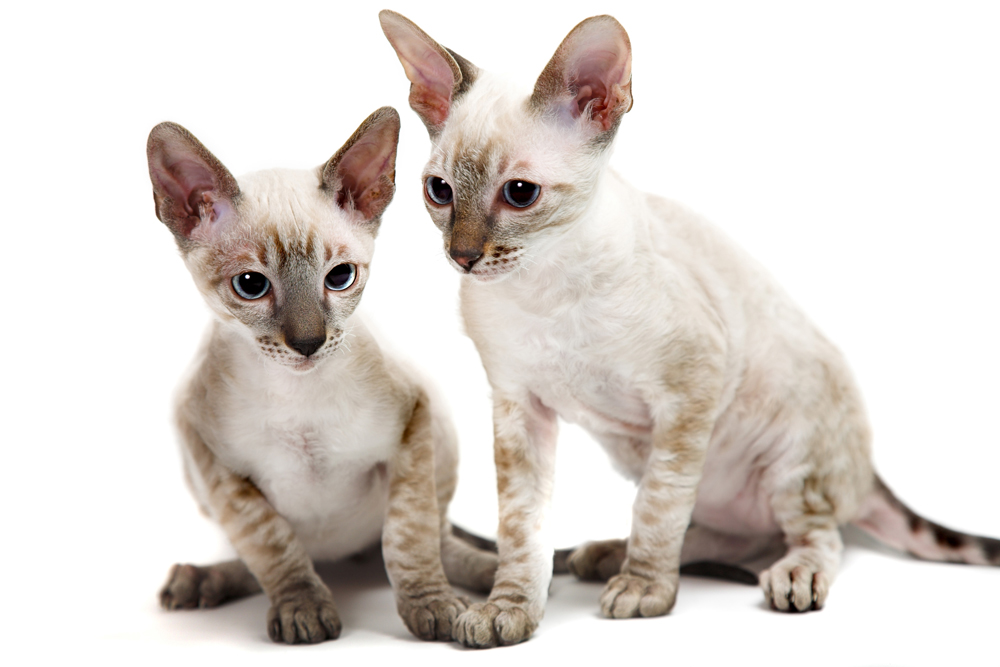
Breeders With Currently Available Kittens
All The Cat Breeds
- Abyssinian
- American Bobtail
- American Curl
- American Shorthair
- American Wirehair
- Balinese
- Bengal
- Birman
- Bombay
- British Shorthair
- Burmese
- Burmillia
- Charteux
- Chausie
- Colorpoint Shorthair
- Cornish Rex
- Devon Rex
- Donskoy
- Egyption Mau
- European Burmese
- Exotic
- Havana Brown
- Highlander
- Himalayan
- Japanese Bobtail
- Khao Manee
- Korat
- LaPerm
- Lykoi
- Maine Coon
- Manx
- Minuet / Napolean
- Munchkin
- Norwegian Forest Cat
- Ocicat
- Oriental Longhair
- Oriental Shorthair
- Persian
- Peterbald
- Pixie Bob
- Ragamuffin
- Ragdoll
- Russian Blue
- Savannah
- Scottish Fold
- Scottish Straight
- Selkirk Rex
- Seychellois
- Siamese
- Siberian
- Singapora
- Snowshoe
- Somali
- Sphynx
- Thai
- Tonkinese
- Toyger
- Turkish Angora
- Turkish Van

